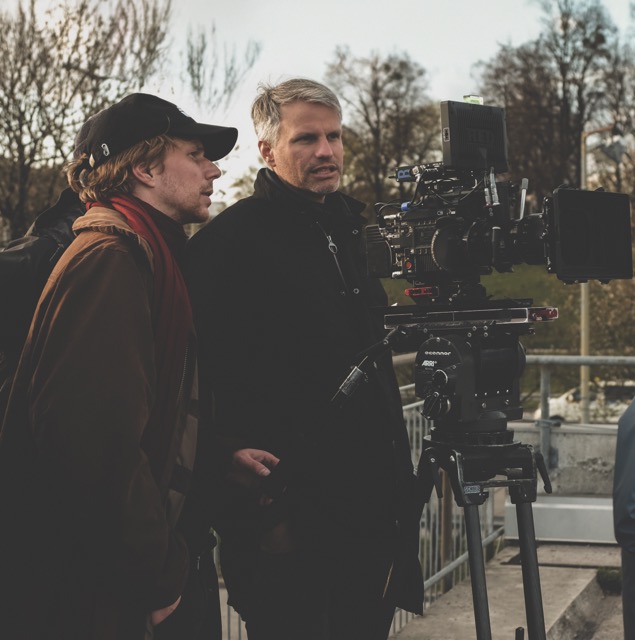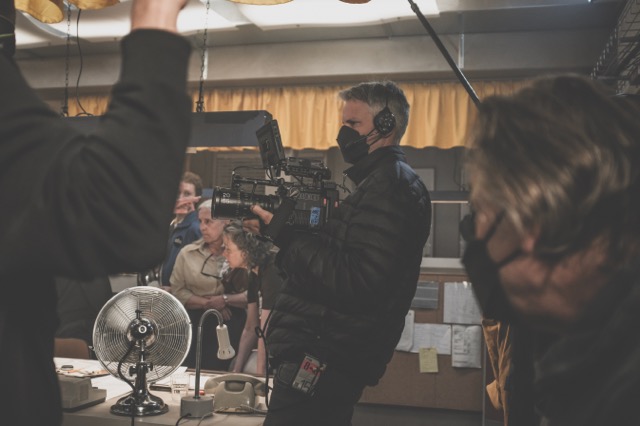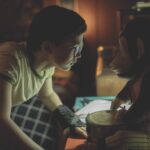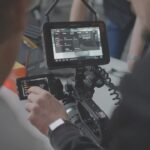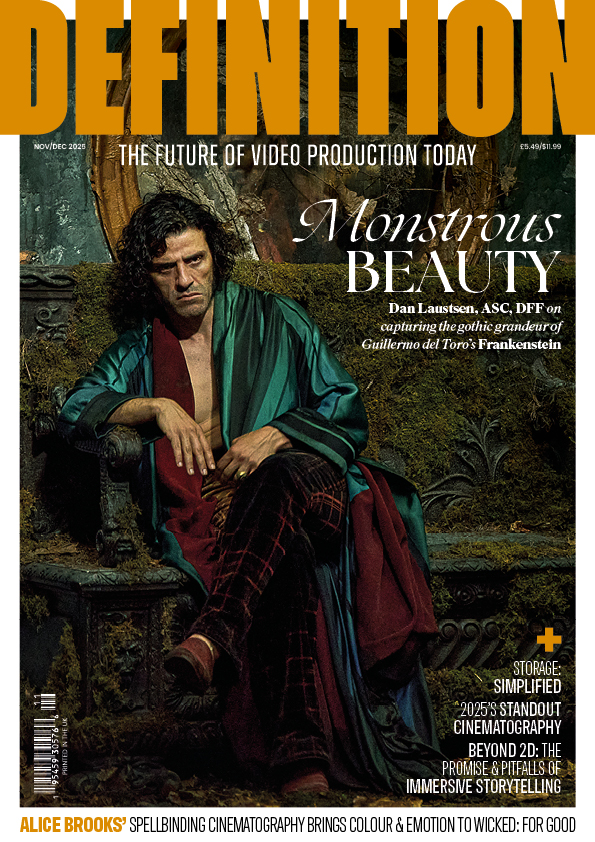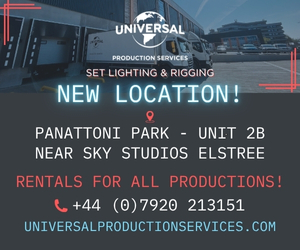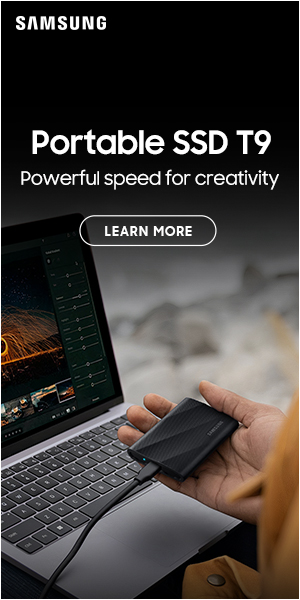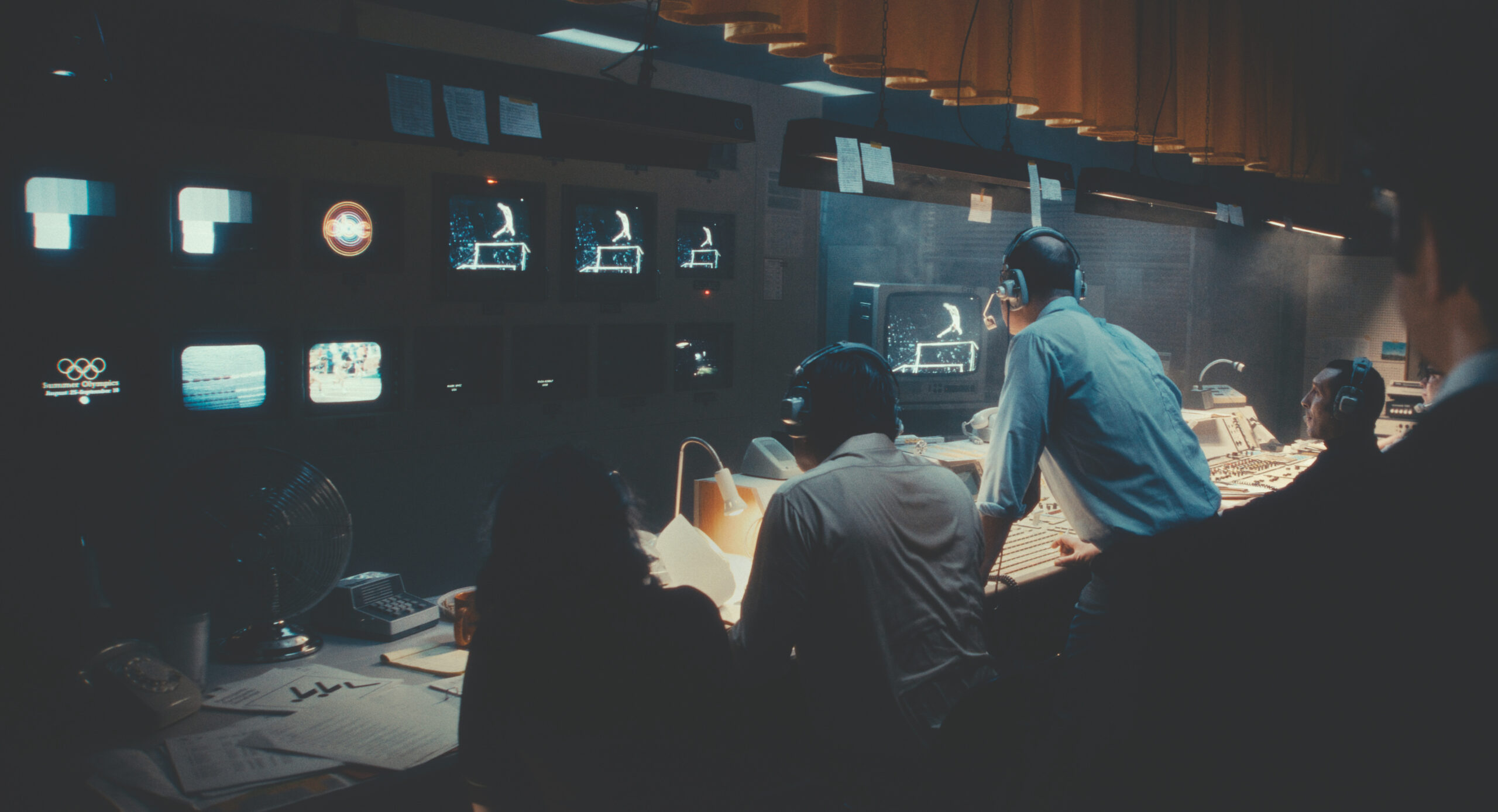
Production: September 5
Posted on Apr 4, 2025 by Admin
“We kept that high-stakes, live-broadcast energy”
Placing viewers inside the ABC Sports newsroom while the Munich Olympics terror attack unfolded, authenticity was key for the makers of September 5. DOP Markus Förderer, ASC, BVK tells us more
Words Nicola Foley | Images Paramount
The 1972 Munich Olympics were meant to symbolise peace and unity, but instead became the stage for one of the most shocking terrorist attacks in modern history – unfolding live on television for the whole world to witness.
In the era before 24-hour rolling news, nearly 900 million viewers watched in real time as members of the militant group Black September infiltrated the Olympic Village, taking Israeli athletes hostage and eventually murdering nine of them. A team from ABC Sports, on site to cover the Games, made the unprecedented decision to broadcast the crisis as it happened.
September 5 takes viewers inside the ABC Sports newsroom, where journalists scrambled to report on the tragedy with limited information and under immense pressure.
For cinematographer Markus Förderer, ASC, BVK, the first task was figuring out how to capture the gravity of this world-changing moment from within the tight confines of the windowless control room. “This was our biggest challenge. The director Tim Fehlbaum had this idea to keep it really contained and only show what the media saw,” explains Förderer. “The question was: how do we give it scale and scope while still staying true to the point of view?”
Windows to the world
One of the solutions was to make the TV monitors in the room ‘windows to the world,’ says Förderer – showing what was happening outside in the Olympic Village just as the journalists reporting would have seen it. It’s an effective trick, making you second guess what you’ve seen playing out through the screens or in ‘reality’. The monitors served as a key practical light source, but also played a critical role in amping up the tension. One of the most distinctive visual elements is the use of screen flicker as an emotional cue, intensifying as the tension builds.
“We tested different flicker frequencies by taking LED tubes back to our hotel rooms and seeing how much was too much before it gave us headaches!” he laughs. “In the opening sequence – the swim race – we introduce a slight flicker, so that the audience can get used to it. But when the first masked terrorist appears on screen, we ramp it up dynamically to create a subconscious sense of unease.”
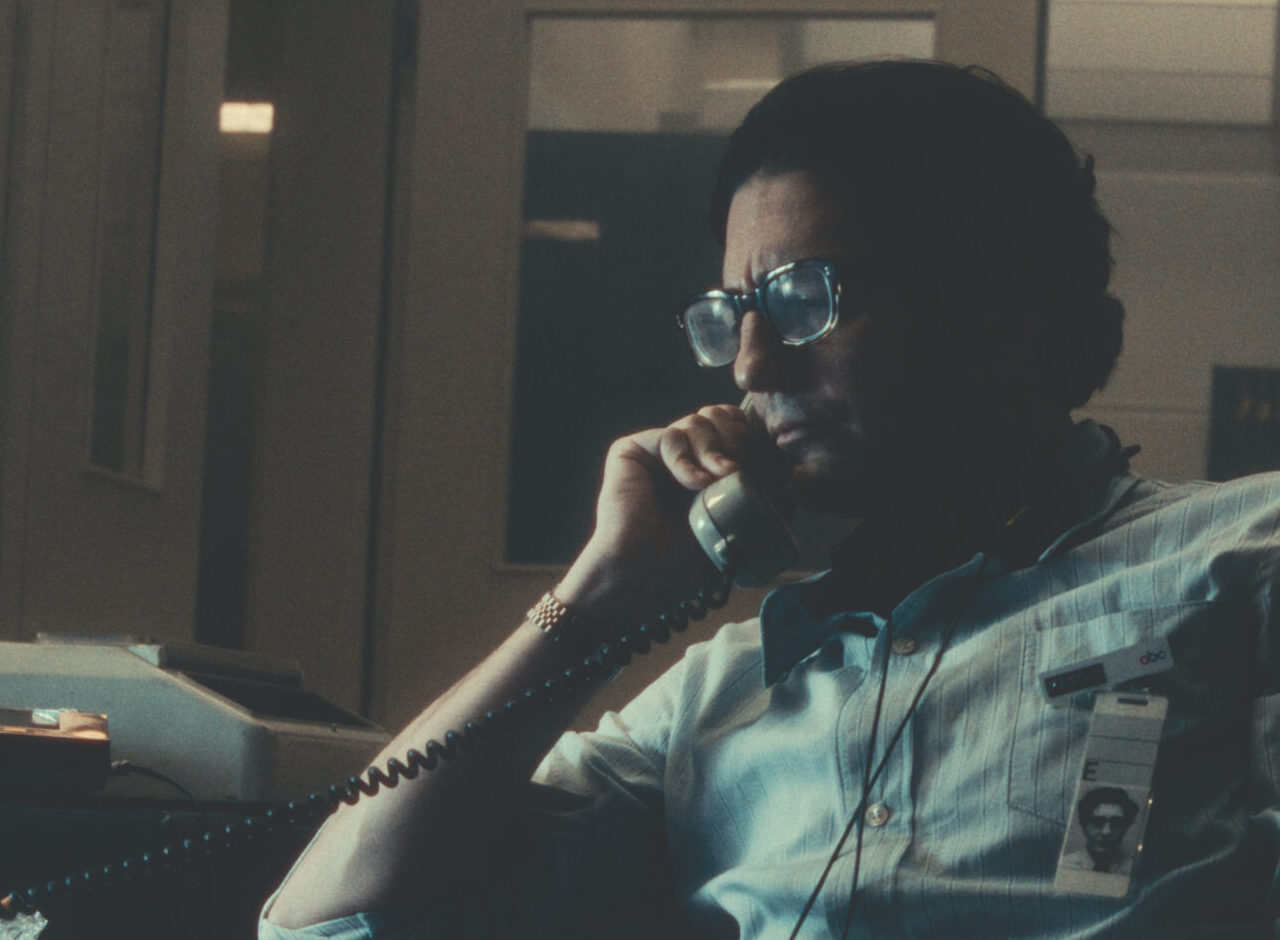
That seventies look
Given the setting and historical backdrop, the conversation naturally came up around shooting the whole thing on film. But after extensive testing, Förderer and the team opted for digital, shooting on RED V-RAPTOR cameras and using vintage lenses, detuned modern glass and lighting techniques to achieve the period aesthetic.
“We tested 35mm, but the sensitivity of film stock – even pushed to the limit – wouldn’t have allowed us to achieve the naturalistic feel we wanted,” he says. “The entire set was built within a real, existing studio in Munich, which had no windows. This meant that the only key light sources were the TV monitors themselves, and using film would have required more light than we could justify for the look we were going for. What makes September 5 unique is that when people watch it they might get the feel of a film from the seventies, but it actually doesn’t look like that,” he continues.
“It invokes the feel through lenses and lighting, with references to films and documentaries shot at the time, but it actually looks more modern.” To bridge the gap between digital capture and the grainy, textured feel of the era, Förderer scoured eBay for lenses from the seventies, including Zoomar glass, which had originally been used to shoot the Munich Olympics. “I saw an advert for them in an old copy of American Cinematographer from the time, promoting that they’d been used in the event. I thought: this is a sign, we have to find them!
“Most of them are long telephoto lenses, but we managed to find a wide-angle Zoomar lens made for stills; it was actually the first zoom lens ever made. We had it converted into a PL mount so we could use it on the RAPTOR and it looked amazing, but also a bit funky, so I knew we also needed a more modern lens with very close focus.”
To keep the vintage character consistent, Förderer decided to detune the modern lenses himself. “I don’t recommend trying this at home,” he laughs. His experience testing vintage glass for his website cineflares.com had given him insight into how older optics reacted to light: “In those places, I found some really unique aspects and lenses from the seventies,” he explains.
He then introduced imperfections to mimic older optics. “Old lenses, they were never built in a clean room, right? Today’s lenses are, but back in the seventies they were never perfect. They were hand-assembled with misaligned elements,” he explains. “I took it apart and put it back together, but imperfectly – on purpose.” The result was one-of-a-kind. “It’s a unicorn lens – very dirty, with dust and fingerprints in between elements. It created a unique effect with a 3D bloom.”
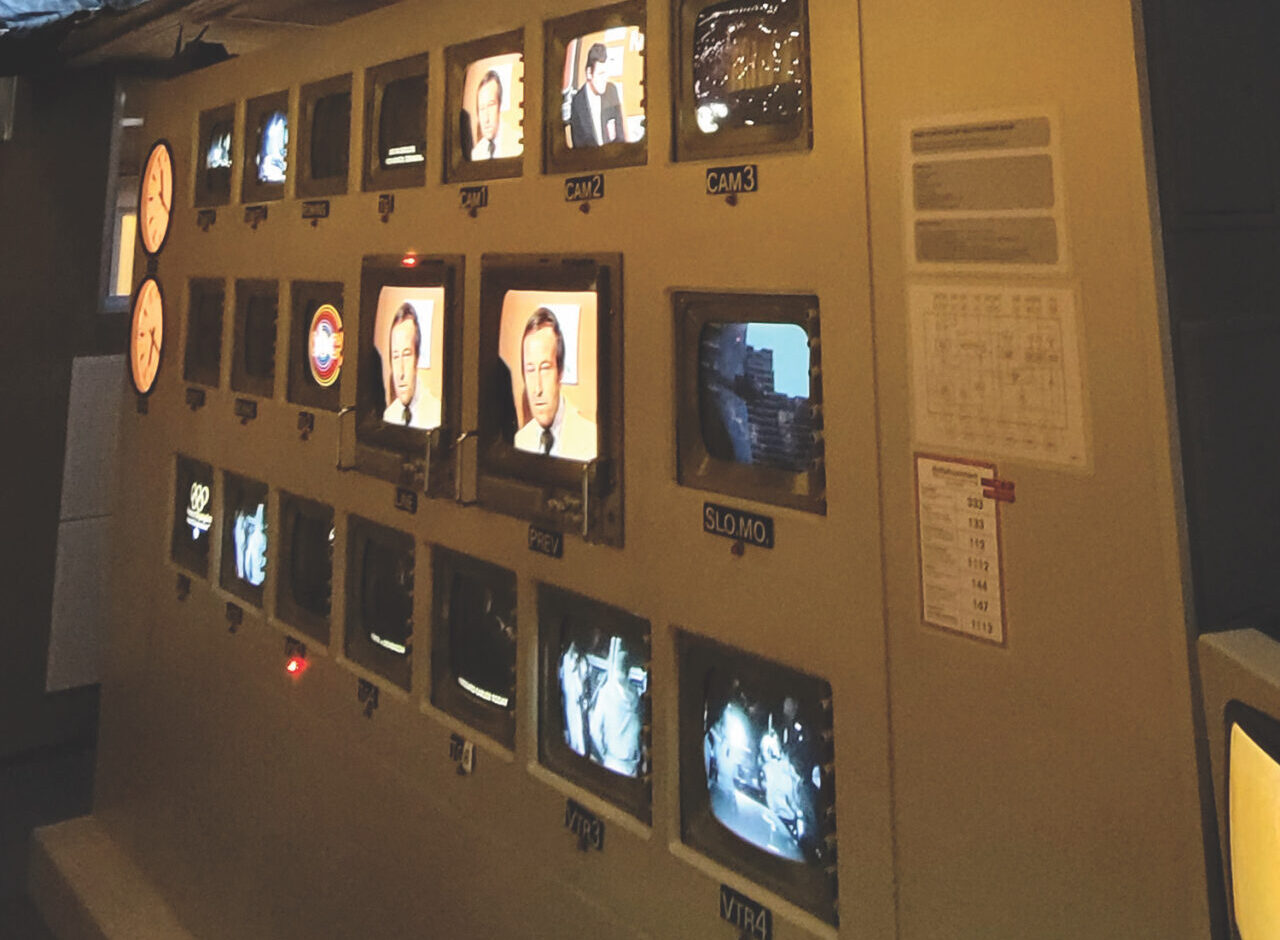
The immersion factor
Another key component of the film’s visual grammar was the feel of almost documentary-like immediacy. It was shot almost entirely handheld with long takes and whip pans, designed to keep pace with the chaos inside the newsroom. “Every scene was shot as a oner – a continuous take,” Förderer elaborates. “We knew we would tighten it up with editing, but by shooting this way we kept that high-stakes, live-broadcast energy.”
For added realism, the team also opted against blue or green screens for the TV monitors in the control room. Instead, all of the footage was played back on them in real time. “That was essential,” he insists. “If our actors had been reacting to blank screens, we would have lost so much authenticity. The monitors had real flicker, real artefacts – it was all live in the room.”
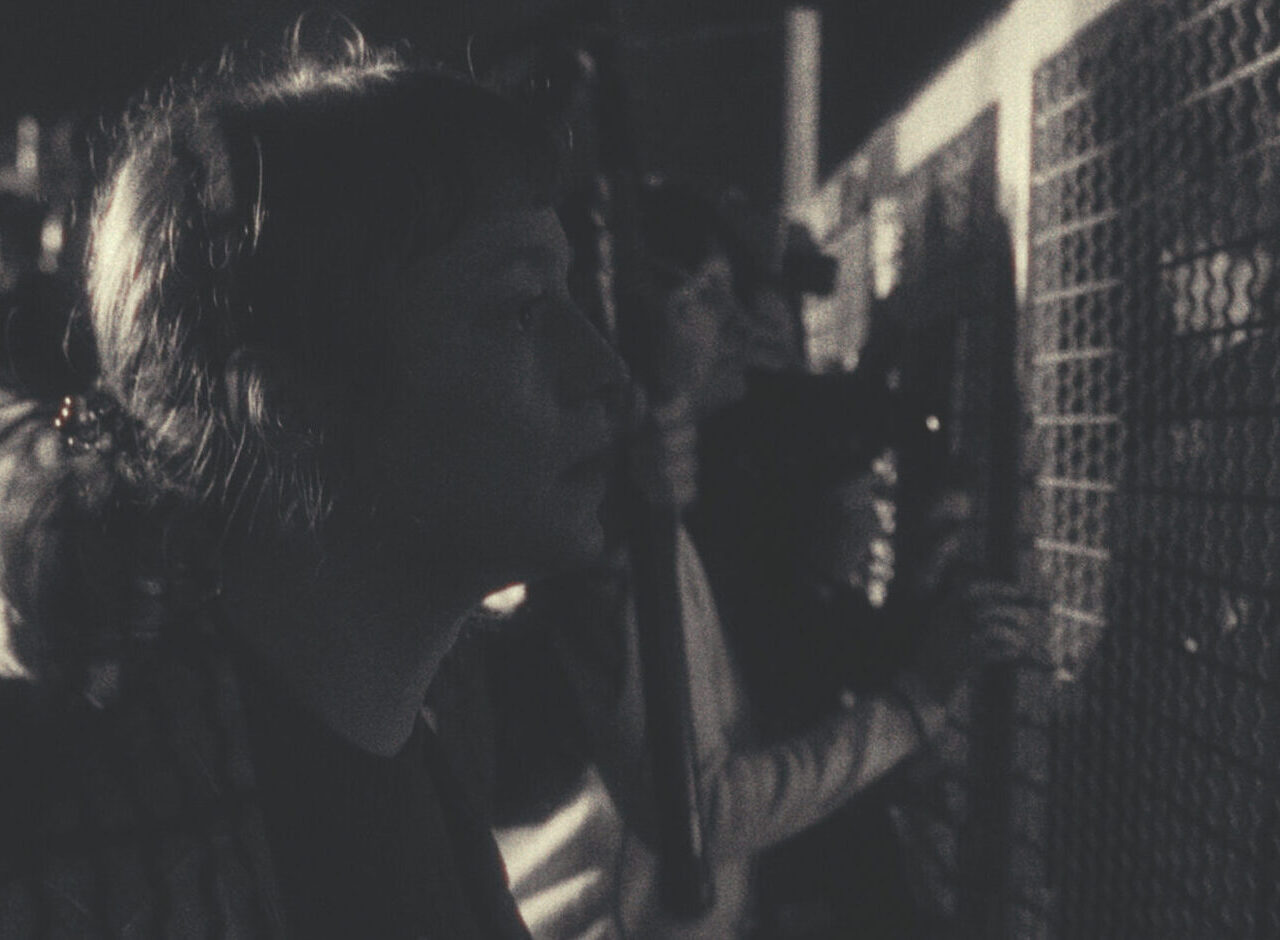
Balancing realism with respect
For the whole team, authenticity was paramount, but so was handling the subject matter respectfully. They took great care not to exploit any real footage of victims; instead, most of what appears to be archival material was actually painstakingly recreated. Despite their sensitive approach, and praise for capturing the experience from those who lived through it – including Geoffrey Mason, a control-room functionary for ABC who is depicted in the film – Förderer still grappled with the project’s ethical weight.
“We were right there in the Olympic Village where those hostages were killed, and it was chilling. We were making a film, but because it was rooted in historical fact it had to be as accurate as possible. At the same time, we were telling a narrative story, using creative techniques to build tension. There’s no such thing as a neutral perspective. If we show a masked man on a balcony and zoom in, we’re framing it like a horror film to make the audience feel something. But I felt a deep responsibility to be accurate, especially in depicting what happened inside the ABC compound.”
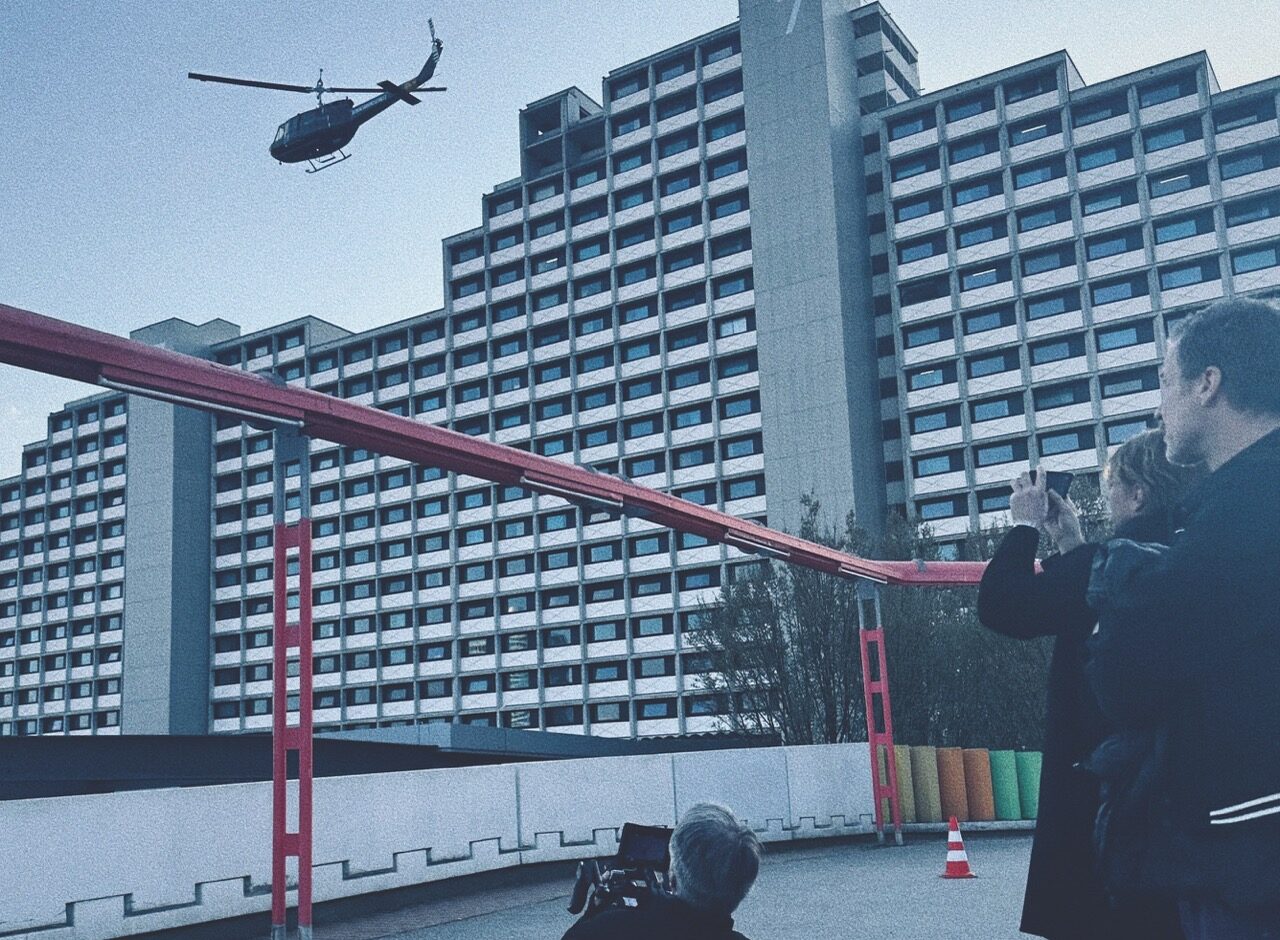
Trusting your gut
For Förderer, the project itself and the reaction to it – which included an Oscar nomination – have been a dream come true. “You always hope, but you just never know. It was such a small film but such a huge story. We worried about whether we were doing it justice by telling it in such a contained way, but ultimately that made it special and unique.”
Looking back, his biggest takeaway has been the importance of embracing intuition. “You can plan, storyboard and previs, but once you’re in the room with the actors you have to be ready to throw it all away and follow your gut instinct wherever the story takes you. If you see something magical, go for it,” he urges.
“You can do a perfect crane shot, stabilise it in post and make everything flawless, but it might have no soul. I think people are craving reality, especially in a time when we’re bombarded with AI-generated images. I’m drawn to things that feel human – that were captured in the moment, with real actors. If you can shoot handheld, shoot handheld. Keep it bold. Keep it simple.”
Realism is also at the forefront of Sky’s Chernobyl drama. Read about the production here.
This story appears in the March 2025 issue of Definition


